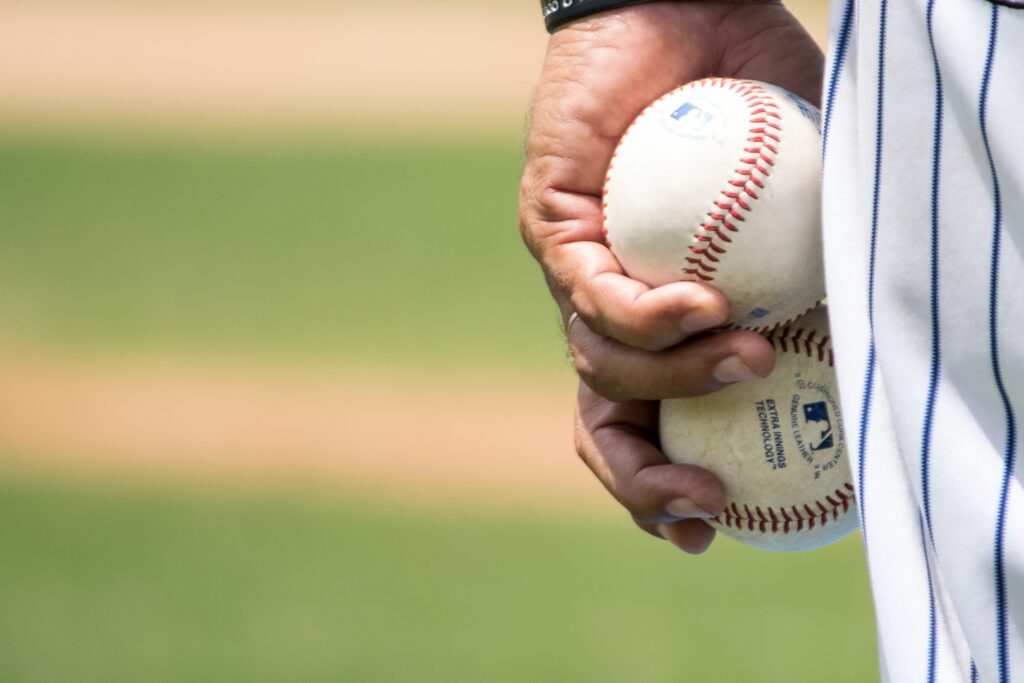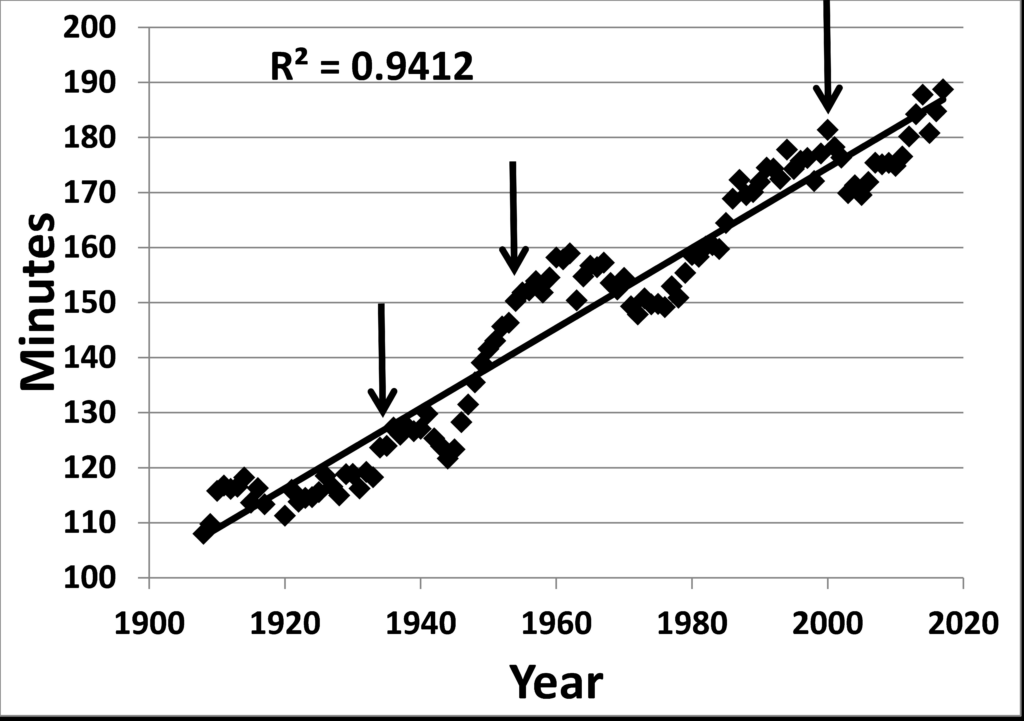
Innovation is a big buzzword, but I am particularly interested in the advantages it brings. Regular readers of my blog know I enjoy learning about innovative approaches across industries almost as much as I love Major League Baseball (MLB). This article combines the two in a discussion of baseball innovations and their impact on the game.
On a recent trip to California for my lithium clients, I had the opportunity to attend baseball games in San Diego, Padres versus Royals, and Los Angeles, Dodgers versus Twins. To my surprise the games were much shorter, by over 30 minutes, than I remembered. I wanted to know why, so, as usual, I did some investigative work.
Changing the game of baseball
Baseball historian David W. Smith has done a lot of research into the time it takes to play games, today and historically. In one study he showed games now run over 190 minutes in keeping with an overall increase in playing time over the past 120 years (see Figure 1).

His several reasons include:
- Time between pitches (attributable to both batter and pitcher)
- Time between innings
- Replay reviews
- Visits to the mound
- Relief pitchers, especially mid-inning changes
Some may agree the games are too long. In 2014, MLB Commissioner Bud Selig was worried enough about it to set up a committee investigating the game length issue. Other stalwart fans will simply state that “this is baseball” and enjoy the game and the sun — no matter how long it takes. Still, baseball innovation wins out.
Why tweak baseball timing?
Statistics show that, discounting the pandemic-influenced seasons of 2020 and 2021, attendance has fallen steadily since 1992. Last year’s average was the lowest since 1996. The sixth game of the last World Series, between Philadelphia and Houston, attracted 12.5 million viewers, making it “the lowest rated and least-watched Game 6 of the Fall Classic on record.”
For this year, MLB Commissioner Rob Manfred innovated to implement three new rule changes:
- Pitch clock
- Limit pickoff throws
- Ban the infield shift
For the pitch clock, pitchers have 15 seconds to start their delivery with the bases empty, and 20 seconds with a runner on base. Batters must be looking at the pitcher with eight seconds left on the clock. If the batter does not do this, it is an automatic strike.
Before, pitchers had unlimited opportunities to try and pick runners off from the base. Now, they can disengage from the rubber only twice per plate appearance. A third pickoff try, if unsuccessful, results in a balk (which puts any runners on base on the next base).
Finally, with no infield shifts, the batter has a much better chance of getting a base hit. That’s because the players now must cover more ground on defense, which the league hopes will add a hit or two a night.
Yes, that’s a lot of technical terms. For the casual baseball fan, you might get more clarity in this USA Today explanation of the three new rules.
What baseball innovations bring
These three innovations have indeed shortened the game. Three weeks into the season, the MLB claims more action has been packed into fewer minutes with games in 2021 at 3 hours, 10 minutes, in 2022 running 3 hours and 4 minutes, and now in 2023, lasting just 2 hours, 37 minutes.
Scoring is up too. “After averaging 8.5 runs per game last season, teams have combined to score 9.1 runs per game in 2023,” according to the MLB.
Plus, viewership is up with an average 26,753 fans per game, up 5% compared to last year.
Of course, I’ve always been happy to watch a game with some hot dogs and beer. I’d love to take in some innings while talking about innovation. Contact me with your ideas for innovative strategies for process and business solutions. In the meantime, as Ernie Banks once said “It’s a beautiful day for a ballgame… Let’s play two!”

